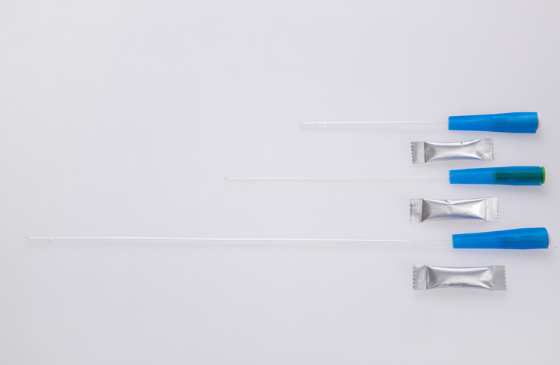TEl: +86-13148388090
Fax:+86-571-88616515
What to Expect after a Catheter is Removed: Female Patients
Author: admin / 2024-08-06After certain periods the catheter is removed from a patient’s body. Since female patients have special anatomical, physiological, and sometimes psychosocial characteristics, it is of significance to address female patients'question of what to expect after a catheter is removed. For this reason, we have written this article titled What to Expect After a Catheter is Removed: Female Patients.

Catheter removal is a common procedure that many women undergo for various medical reasons. Whether the catheter was placed for post-surgical recovery, urinary retention management, or another condition, understanding what to expect after its removal is crucial for a smooth transition back to normal life.
Image of the patient using a catheter to empty the bladder
Immediate Sensations And Symptoms
A. Mild discomfort or burning sensation
It is common for female patients to experience a mild burning or stinging sensation during urination immediately after catheter removal. This discomfort usually results from slight irritation of the urethra caused by the catheter and typically resolves within a day or two. Drinking plenty of fluids can help alleviate this sensation by diluting the urine and flushing out any residual irritants.
B. Increased urgency and frequency
Following catheter removal, some women may notice an increased urge to urinate or experience frequent urination. This is a normal response as the bladder readjusts to functioning independently. The sensation should gradually diminish as the bladder and urethra recover.
C. Temporary urinary incontinence
It is not uncommon to experience temporary urinary incontinence or dribbling. The pelvic floor muscles and sphincters may need time to regain their full strength and coordination. This condition usually improves within a few days to weeks. Practicing pelvic floor exercises (Kegels) can help strengthen these muscles and improve bladder control.
Return of Normal Bladder Function
Urinary retention refers to the inability to empty the bladder completely or at all. This condition can result in discomfort, pain, and potential complications if not addressed promptly. The bladder may need time to return to normal function. In some cases, the few attempts to urinate after catheter removal may be challenging or incomplete. If after the removal of the catheter, the patient’s bladder cannot return to its normal function, even after waiting for some time, she must report this problem to her doctor to receive medical attention.
Risk of Urinary Tract Infections (UTIs)
Catheterization may cause catheter-associated urinary tract infections (CAUTI). The following actions are what we can do about this concern.
A. We can use an aseptic insertion technique (e.g. perform hand hygiene before and after catheter insertion; use sterile gloves, drapes, antiseptic solution, and sterile equipment during insertion). Catheter manufacturers have realized this significance and therefore produce sterile catheter kits.

Sterile catheter products are offered by Hangzhou Bever Medical Device Co., Ltd.
B. Staying hydrated is crucial during the recovery period. Drinking sufficient water helps flush out bacteria and toxins, reducing the risk of urinary tract infections (UTIs). However, patients should follow their healthcare provider's recommendations regarding fluid intake, especially if they have other medical conditions that require fluid restriction.
C. Signs to watch for
Patients should be vigilant for signs of infection and seek medical advice if they experience symptoms such as high fever, severe abdominal or back pain, or persistent and painful urination. Early detection and treatment of UTIs can prevent complications.
Personal Hygiene And Care
A. Perineal Care
Good perineal hygiene is essential to prevent infections and promote healing. After catheter removal during their daily life patients should practice perineal hygiene. They should gently clean the genital area with mild soap and water, especially after urination and bowel movements. It is advisable to avoid using irritants such as scented soaps, douches, or sprays, which can disrupt the natural balance of bacteria and infections.
B. Clothing and pads
Wearing comfortable, loose-fitting clothing and cotton underwear can help prevent irritation and allow the area to breathe. Some women may prefer to use sanitary pads for a short period to manage any temporary incontinence or dribbling.
Physical Activity And Lifestyle Considerations
A. Resuming activities
Most women can return to their normal activities shortly after catheter removal. However, they should avoid heavy lifting, strenuous exercise, or activities that may strain the pelvic area for a short period. Following the healthcare provider's guidance on activity levels is essential for a smooth recovery.
B. Emotional and psychological effects
The experience of catheter removal and the transition back to normal bladder function can be emotionally challenging for some women. It is normal to feel anxious or worried about potential complications or symptoms. Open communication with healthcare providers and seeking support from family and friends can help alleviate these concerns.
Follow-up And Medical Consultation
A. Scheduled follow-up
A follow-up appointment may be scheduled to assess the patient's recovery and ensure no complications have arisen. Patients should use this opportunity to discuss any concerns or symptoms they may be experiencing.
B. When to seek medical attention
If the patient experiences severe pain, heavy bleeding, an inability to urinate, or symptoms of a UTI, it is crucial to seek medical attention promptly. Early intervention can prevent serious complications and ensure a smooth recovery.
Concluding Notes
A catheter is a medical device typically used in circumstances such as urinary retention, accurate measurement of urine output in critically ill patients, or perioperative use for selected surgeries. The expectations female patients have need to be addressed and managed properly in order to achieve a smooth transition to normal functioning and to avoid undesired consequences. We hope this article titled What to Expect After a Catheter is Removed: Female Patients is informative and helpful.


